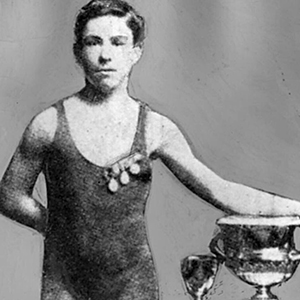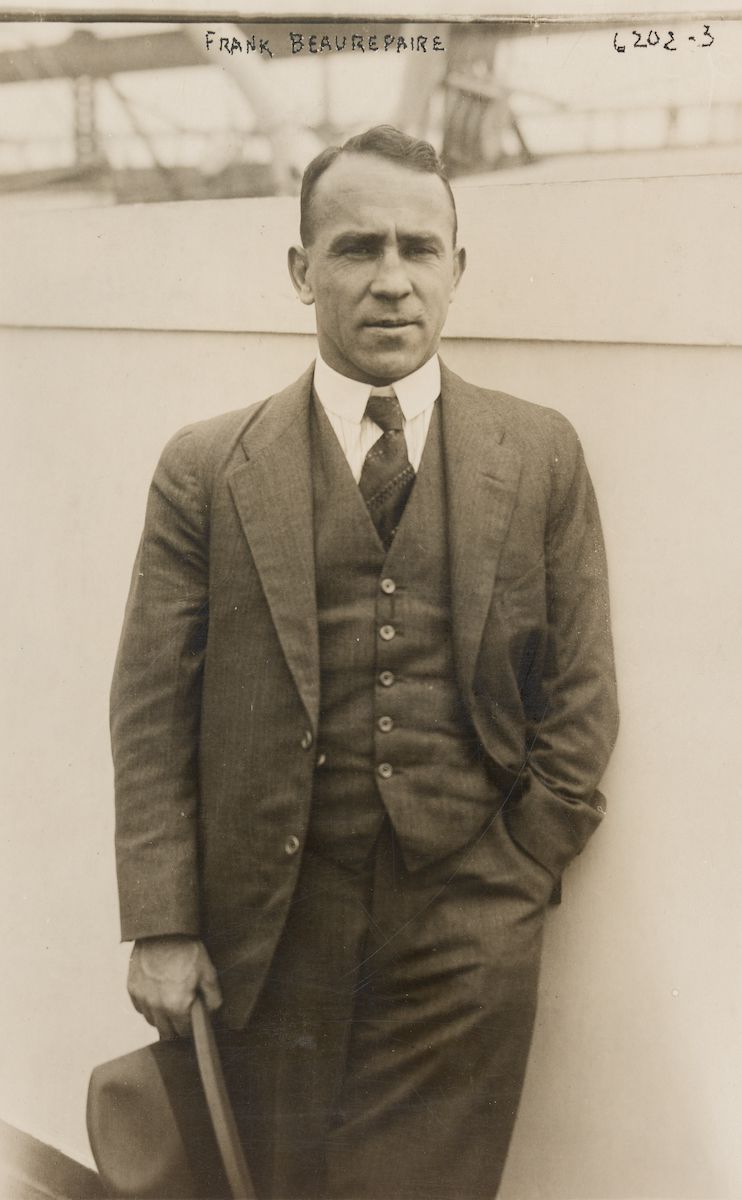Across a remarkable swimming career, Sir Frank Beaurepaire (OW1909) held eight official world records at various distances and competed in three different Olympic Games. But there was much more to the man than just prowess in the pool. Margot Vaughan reveals the interesting life of a celebrated Old Wesley Collegian.
The new Olympic Games had only been run three times when Frank Beaurepaire (1891-1956) was chosen for the swimming team.

Sir Francis Joseph Edmund Beaurepaire came to Wesley in 1909, at the firm suggestion of then Principal, LA Adamson. By this stage, he was already making his mark in the pool. He had won his first title in 1906 at age 14, and more came during competition in Perth, which then put him into the Olympics in London in 1908. He must be the only student to arrive at Wesley already an Olympian!
He married Myra McKay in 1915 and they had two children, with son Ian later taking over the business. He enlisted for war service, but recurrent health issues saw him declared medically unfit. He was later appointed Military Secretary for the YMCA and worked as a field ambulance officer in France, witnessing many terrible scenes there.
His swimming career was peppered with near misses. He held several swimming records, so many in fact, they almost filled an entire page in the 1910 Chronicle, but he never won a gold medal. Conditions during training and at the Games themselves were much less than ideal, and he had to contend with a number of health issues. But despite these setbacks, he continued to set records.
One of the requirements for Olympic competition was that the person had to be an amateur, not a professional athlete. He found work with the Victorian Education Department as a swimming teacher, but the selection committee considered that ‘professional’ status and disqualified him from competing. He left that position and worked in sales, making a comeback in the Antwerp Games of 1920, where his sister Lily also competed in swimming and diving.
 In later life, he was a successful businessman. He started off selling insurance, but with the increasing popularity of the motor car, he could see a need for tyres. His first business started in 1922 with funding from a large cash reward he received for his part in attempting to save the life of a shark attack victim at Coogee Beach in February 1922. It was called Beaurepaire Tyre Service.
In later life, he was a successful businessman. He started off selling insurance, but with the increasing popularity of the motor car, he could see a need for tyres. His first business started in 1922 with funding from a large cash reward he received for his part in attempting to save the life of a shark attack victim at Coogee Beach in February 1922. It was called Beaurepaire Tyre Service.
With the success that followed, he used his funds and business skills to give back to the community. He started a second company in 1933, called, naturally enough, ‘Olympic Tyres.’ Olympic and Dunlop merged in 1980. In the following decades, the industry suffered and by 2008, the last Australian-made tyre rolled off the assembly line.
Active in politics, he was elected to the Gipps Ward in 1928. He championed the Herald newspaper’s ‘Learn-to-Swim’ campaign in schools, founding ‘Learn to Swim Victoria’ in 1929 and served as its President for 24 years.
From 1940 to 1942, he was Lord Mayor of Melbourne, a position his son would also hold in later years. During that time, he helped to raise over £1,000,000 for war charities both at home and overseas. He encouraged the installation of numerous municipal swimming pools and among his many acts of philanthropy, personally gifted £200,000 to the University of Melbourne for a sports centre.
Frank was knighted in 1942 for his many achievements. After his time as Lord Mayor, he was elected to the Legislative Council, where he sat until 1952. He served on the Olympics Committee and was instrumental in getting the Games to Melbourne. But in a cruel twist of fate, he died suddenly of aortic stenosis on 29 May 1956, a couple of weeks before the Games began.
The Beaurepaire Centre at the University of Melbourne, opened after his death, was completed in time for use as a training site during the Melbourne Olympics. It remains in use today and is a fitting memorial to this wonderful man with a rare combination of sporting and business ability.